|
New!
Format(s):
SIG Perspectives
In this SIG 2 activity, participants explore clinical implications and decision-making through detailed case descriptions that were submitted by people applying for Board Certification from the Academy of Neurogenic Communication Disorders and Sciences. The first article describes how a psycholinguistic model of aphasia can inform assessment and treatment in the outpatient setting. The second article discusses the application of the Life Participation Approach to Aphasia for a person with severe aphasia. The third article explores the importance of evidence-based practice in the care of a person with amyotrophic lateral sclerosis. The fourth article describes the use of a high-tech augmentative and alternative communication system in the care of a person with a severe traumatic brain injury.
New!
Format(s):
SIG Perspectives
In this SIG 2 article series, participants explore various diagnostic speech-language pathology practices for people with neurogenic communication disorders. The first article uses an online survey to examine how speech-language pathologists (SLPs) assess the social communication environments of adolescents who have sustained traumatic brain injuries. The second article discusses the results of a survey regarding SLPs’ knowledge of functional speech disorders. Diagnostic criteria are discussed, and guidance is provided for clinicians and educators. The third article explores the use of the Western Aphasia Battery-Revised as a tool to aid in the differential diagnosis of acquired apraxia of speech, as it often co-occurs with aphasia. The fourth article is a preliminary study describing the use of a transcription-less rating scale as a screening tool for social communication impairment in people who have sustained traumatic brain injury.
Format(s):
SIG Perspectives
In this SIG 2 article series, participants explore special topics in the assessment
and treatment of individuals with neurogenic communication disorders. The first
article discusses target selection for the assessment and treatment of discourse
in people with aphasia, emphasizing the need for alignment with the person’s
discourse goals. Then, the second article explores sources of bias in the
assessment of Black athletes with sports-related concussion, as well as culturally
responsive practices that can mitigate the negative impact of such bias. Finally,
the third article is a case study of a person with foreign, or nonnative, accent
syndrome. Assessment and behavioral intervention targets that led to his
successful diagnosis and treatment are discussed.
Format(s):
SIG Perspectives
In this SIG 2 activity, articles explore treatment approaches for neurogenic
communication disorders. The first article includes a meta-analysis of the effects of
cognitive rehabilitation on pragmatic language after traumatic brain injury. The second
article describes steps for improving palliative, person-centered speech-language
pathology services for individuals with primary progressive aphasia. The third article
describes implementing shared decision making with individuals with amyotrophic lateral
sclerosis related to dysarthria and dysphagia treatment.
Format(s):
SIG Perspectives
In this SIG 2 activity, participants explore the needs of people with aphasia and other cognitive-communication impairments as they interact with the legal system. The first article is a systematic review that reviews the historic accommodations that have been made to support people with aphasia during court proceedings. Using these, the article provides proactive recommendations for the support of people with aphasia who are involved with legal proceedings. The second article discusses the etiologies and prevalence of cognitive-communication disorders in people who are involved in the criminal justice system. Recommendations are provided for SLPs to participate as a part of the interdisciplinary team working with these youth and adults.
Format(s):
SIG Perspectives
These SIG 2 articles explore innovative approaches for supporting the mental health and functional communication of people with chronic aphasia, including how SLPs can work collaboratively with other professionals, using script training to improve functional communication, and using co-constructed storytelling to support life participation and identity reconstruction.
Format(s):
SIG Perspectives
In this SIG 2 activity, participants explore innovative articles regarding a range of topics
in the assessment and treatment of motor speech disorders. The first article describes a
case of anarthria in which the speech-language pathologist thoroughly described the
patient’s motor speech presentation, thereby contributing to his overall neurologic
diagnosis. The second article examines the effects of transcranial direct current
stimulation (tDCS), a promising method of eliciting behavior change through brain
stimulation, on the speech of individuals with Parkinson’s disease. The third article
explores the speech and language profiles of children with apraxia of speech as their
primary diagnosis, as compared to children with other concomitant diagnoses.
Format(s):
SIG Perspectives
This SIG 2 activity, participants explore aspects of service delivery and advocacy for people with aphasia that are innovative and/or unique. The first article describes the creation of community aphasia groups and includes guidance for creating aphasia-friendly materials for a variety of purposes. The second article describes the challenges of people with aphasia in navigating the justice system and discusses strategies to support their success within that unique environment. The third article describes the nature of verbal short-term memory impairment in people with aphasia, methods of assessment, and potential directions for treatment.
Format(s):
SIG Perspectives
These SIG 2 Perspectives articles focus on counseling skills for working with persons with aphasia, “counseling+” activities for patients with mild cognitive impairment and dementia, and resilience in neurorehabilitation. Topics include counseling skills; counseling roles of SLPs; care partner training; and resilience in persons with acquired brain injury, aphasia, dementia, and Alzheimer’s disease.
Format(s):
SIG Perspectives
These SIG 2 articles focus on clinical assessment and practices for individuals with aphasia. Topics covered included challenges associated with diagnosing primary progressive aphasia (PPA) and the impact of adaptive yoga programs for persons with aphasia. First, Aimee Dietz, E. Susan Duncan, Lauren Bislick, Sarah Stegman, Jenna Collins, Chitrali Mamlekar, Rachel Gleason, and Michael J. McCarthy provide an overview of the potential impact adapted yoga programs can have for people with stroke-induced aphasia. Second, Adithya Chandregowda raises awareness about the challenges associated with encountering primary progressive aphasia (PPA) patients in the acute hospital setting.
|

